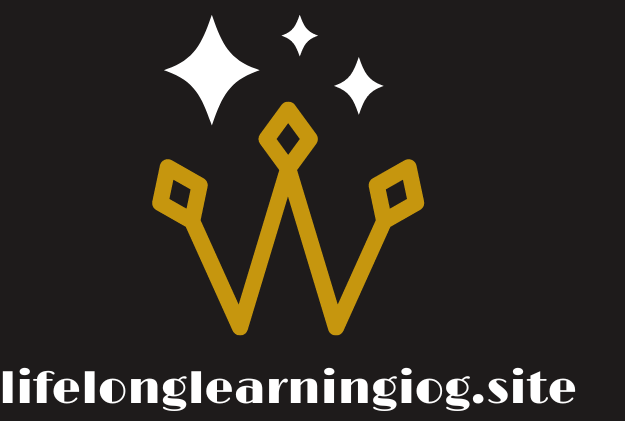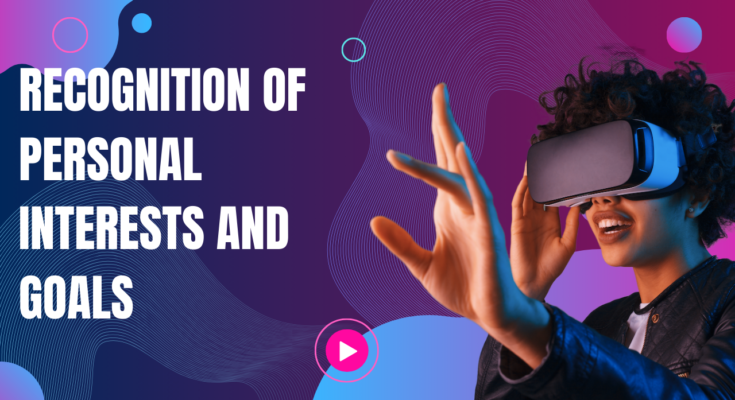Outline
- Introduction
- Definition of personal interests and goals
- Importance of recognizing personal interests and goals
- Impact on personal and professional life
- Understanding Personal Interests
- What are personal interests?
- Examples of common personal interests
- The role of personal interests in daily life
- Identifying Personal Interests
- Methods to discover personal interests
- Reflective practices
- Personality tests and assessments
- Journaling and self-reflection
- Exploring Personal Interests
- Engaging in hobbies and activities
- Experimenting with new experiences
- Seeking inspiration from others
- Defining Personal Goals
- What are personal goals?
- Short-term vs. long-term goals
- The significance of setting personal goals
- Setting Personal Goals
- SMART goals framework
- Goal-setting strategies
- The role of vision boards and goal journals
- Aligning Interests with Goals
- Connecting personal interests with goals
- Ensuring coherence and alignment
- Real-life examples
- Overcoming Barriers
- Common obstacles in recognizing interests and goals
- Strategies to overcome these barriers
- The importance of perseverance
- Personal Growth and Development
- Continuous learning and skill development
- The role of personal interests in personal growth
- Setting milestones and celebrating achievements
- Balancing Multiple Interests and Goals
- Managing time and resources
- Prioritizing interests and goals
- Maintaining a healthy work-life balance
- Utilizing Resources and Tools
- Books and online resources
- Workshops and courses
- Community groups and networks
- Case Studies
- Success stories of individuals recognizing their interests and goals
- Lessons learned from their journeys
- How they overcame challenges
- Expert Insights
- Quotes and advice from personal development experts
- Recommendations for identifying and pursuing interests and goals
- The psychological benefits of knowing one’s interests and goals
- Conclusion
- Summary of key points
- Encouragement to start recognizing personal interests and goals
- Call to action for further exploration
Table of Contents
Article
Introduction
Recognizing personal interests and goals is a vital step towards achieving a fulfilling and balanced life. Personal interests are the activities and pursuits that capture our attention and bring us joy, while personal goals are the milestones we aim to reach in various aspects of our lives. Understanding and acknowledging these interests and goals can significantly impact our personal and professional lives, leading to greater satisfaction and a sense of purpose.
Understanding Personal Interests
What Are Personal Interests?
Personal interests are activities, hobbies, and pursuits that individuals find enjoyable and engaging. These can range from creative endeavors like painting and writing to physical activities like sports and hiking. Personal interests often reflect one’s personality and values, offering a way to express oneself and find joy in everyday life.
Examples of Common Personal Interests
Common personal interests include reading, traveling, cooking, playing musical instruments, gardening, and participating in sports. These interests can vary widely among individuals, shaped by personal experiences, cultural background, and individual preferences.
The Role of Personal Interests in Daily Life
Personal interests play a crucial role in our daily lives by providing a source of relaxation and pleasure. They can serve as a means to unwind after a long day, a way to connect with others who share similar passions, and a method for continuous learning and self-improvement.
Identifying Personal Interests
Methods to Discover Personal Interests
Discovering personal interests can be an enlightening journey. There are several methods to uncover what truly captivates you, including reflective practices, personality tests, and journaling.
Reflective Practices
Reflection involves taking time to think deeply about what activities make you feel happy and fulfilled. Consider moments when you felt most engaged and excited, and note what activities you were doing at those times.
Personality Tests and Assessments
Various personality tests and assessments can help identify your interests. Tools like the Myers-Briggs Type Indicator (MBTI) and the Strong Interest Inventory can provide insights into your preferences and suggest activities you might enjoy.
Journaling and Self-Reflection
Keeping a journal can be an effective way to explore your interests. Write about your daily experiences, noting what activities you found most enjoyable and why. Over time, patterns will emerge that can guide you towards your true interests.
Exploring Personal Interests
Engaging in Hobbies and Activities
Once you’ve identified potential interests, start engaging in related hobbies and activities. This hands-on approach helps you discover what you genuinely enjoy and develop your skills in those areas.
Experimenting with New Experiences
Don’t be afraid to step out of your comfort zone and try new experiences. Experimenting with different activities can lead to unexpected discoveries and new passions.
Seeking Inspiration from Others
Look to others for inspiration. Talk to friends and family about their interests, attend workshops and events, and join online communities. Learning from others can provide new ideas and perspectives.
Defining Personal Goals
What Are Personal Goals?
Personal goals are specific objectives that individuals aim to achieve in various aspects of their lives, such as career, health, relationships, and personal growth. These goals provide direction and motivation, helping individuals focus their efforts and resources towards achieving desired outcomes.
Short-term vs. Long-term Goals
Short-term goals are objectives that can be achieved in a relatively short period, typically within a year. These might include completing a course, starting a new hobby, or saving a certain amount of money. Long-term goals, on the other hand, are more extensive and require sustained effort over several years. Examples include earning a degree, advancing in a career, or achieving financial independence.
The Significance of Setting Personal Goals
Setting personal goals is essential for personal and professional growth. Goals provide a roadmap for where you want to go and help you stay focused and motivated. They also enable you to measure progress and celebrate achievements, fostering a sense of accomplishment.
Setting Personal Goals
SMART Goals Framework
The SMART framework is a widely-used method for setting effective goals. SMART stands for Specific, Measurable, Achievable, Relevant, and Time-bound. Using this framework ensures that your goals are clear, realistic, and trackable.
Goal-Setting Strategies
Effective goal-setting strategies include breaking down larger goals into smaller, manageable tasks, setting deadlines, and regularly reviewing and adjusting goals as needed. This approach helps maintain momentum and ensures steady progress.
The Role of Vision Boards and Goal Journals
Vision boards and goal journals are powerful tools for visualizing and tracking your goals. A vision board is a collage of images and words representing your goals and aspirations, serving as a daily reminder of what you’re working towards. A goal journal allows you to document your progress, reflect on challenges, and celebrate successes.
Aligning Interests with Goals
Connecting Personal Interests with Goals
Aligning your interests with your goals ensures that your pursuits are meaningful and enjoyable. For example, if you love writing and your goal is to build a career, consider setting a goal to become a published author or start a blog.
Ensuring Coherence and Alignment
It’s important to ensure that your interests and goals are coherent and aligned. This coherence helps maintain motivation and ensures that your efforts are focused and productive.
Real-Life Examples
Consider the story of Jane, who discovered her love for cooking during her college years. She set a goal to become a professional chef and opened her own restaurant, successfully aligning her passion with her career goal.
Overcoming Barriers
Common Obstacles in Recognizing Interests and Goals
Common obstacles include lack of time, fear of failure, and uncertainty about one’s true interests. These barriers can hinder the process of recognizing and pursuing personal interests and goals.
Strategies to Overcome These Barriers
Overcoming these obstacles involves effective time management, seeking support from others, and adopting a growth mindset. Setting small, achievable goals can help build confidence and momentum.
The Importance of Perseverance
Perseverance is key to overcoming challenges and achieving your goals. Staying committed to your interests and goals, even in the face of setbacks, is essential for long-term success.
Personal Growth and Development
Continuous Learning and Skill Development
Personal growth involves continuous learning and skill development. Engaging in activities that challenge you and expand your knowledge can lead to significant personal development.
The Role of Personal Interests in Personal Growth
Personal interests play a crucial role in personal growth. They provide opportunities for self-expression, creativity, and learning, contributing to overall well-being and satisfaction.
Setting Milestones and Celebrating Achievements
Setting milestones allows you to track progress and celebrate achievements along the way. This practice reinforces positive behavior and keeps you motivated.
Balancing Multiple Interests and Goals
Managing Time and Resources
Balancing multiple interests and goals requires effective time and resource management. Prioritizing tasks and setting realistic timelines can help you manage various pursuits.
Prioritizing Interests and Goals
Not all interests and goals are equally important. Prioritize those that align most closely with your values and long-term objectives.
Maintaining a Healthy Work-Life Balance
Maintaining a healthy work-life balance is essential for overall well-being. Ensure that your pursuits do not overwhelm you and that you have time for rest and relaxation.
Utilizing Resources and Tools
Books and Online Resources
Numerous books and online resources can help you identify and pursue your interests and goals. These resources provide valuable insights and practical advice.
Workshops and Courses
Attending workshops and courses can enhance your skills and knowledge in areas




